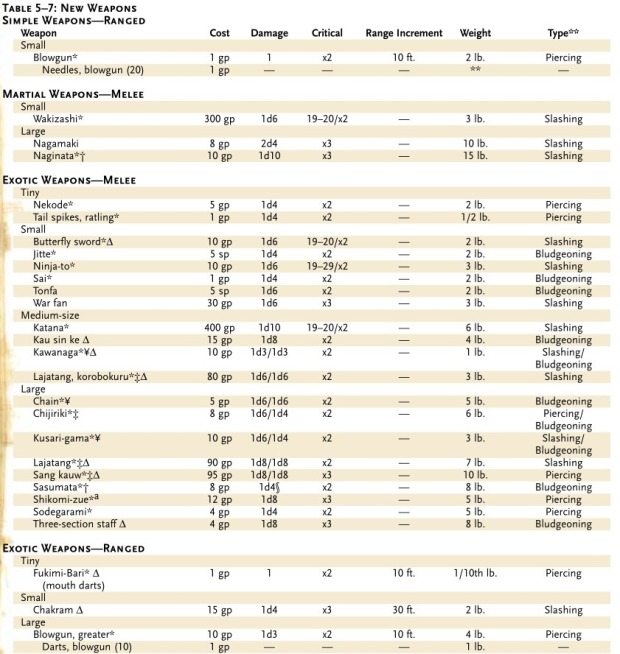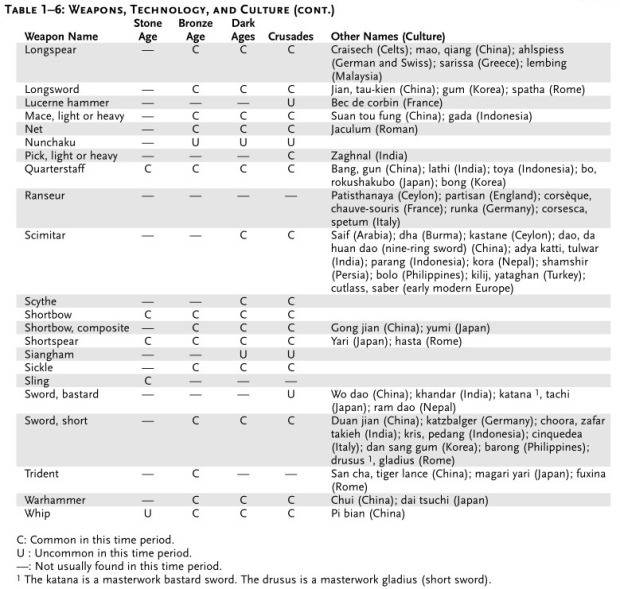In 3E, the “exotic weapon” category is simply a mess. There’s no discernible rationale for which weapons belong to it and which don’t – or, rather, there are several competing rationales, none of which are consistently applied.
~ @prokopetz, who then listed these rationales, ranging from “slightly better stats” to “has an East Asian name. Yes, specifically East Asian, in most cases”.
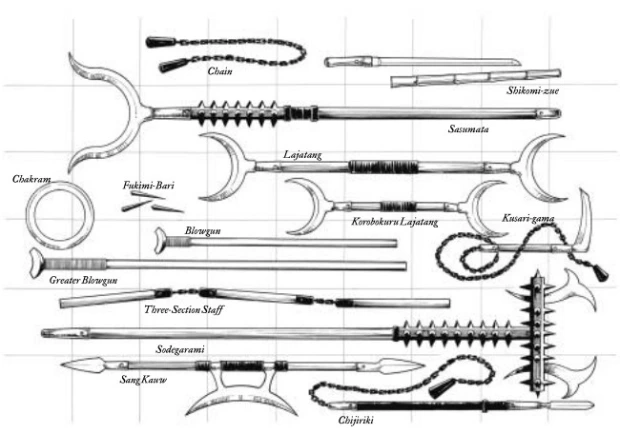
Oriental Adventures, D&D 3rd Edition (3.0)
I agree with this sentiment. And that “specifically East Asian” thing in 3E drove me nuts. Monk was a CORE class from the beginning, right there in the Player’s Handbook. Supplements that weren’t setting-specific (I am deliberately not counting Oriental Adventures here…) included Ninja and Samurai, there were tons of relevant prestige classes all over the place, and also the entire Tome of Battle.
You couldn’t even pretend the assumed setting was limited to fantasy Europe… and yet the DMG did exactly that. It said that the rules assume “a medieval level of technology, a Western European flavor, and a moderately historical basis.” Mate, if that were the case, your monks would be illuminating manuscripts and brewing beer, not channeling ki.
And that fundamental dissonance was reflected in the weapons rules. So even the kama – a farming implement made for reaping crops and doubling as a peasant weapon, dealing 1d6 slashing damage with a 20/x2 crit range just like the sickle, presumably because it IS a bloody sickle – was listed as an “exotic” weapon. What the everloving fuck.
Here, lemme illustrate the point about the names.
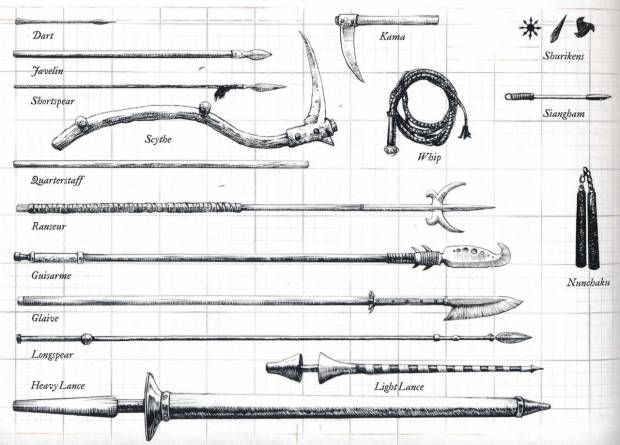
Player’s Handbbok, D&D 3rd Edition (3.5)
3rd Edition weapons with names that are neither English nor made-up nor “words that are French but so is half of English military history, so let’s not bother with bec de corbin and the like”
[This section doesn’t include Oriental Adventures or other 3.0 material.]
Simple Weapons
- none
Martial Weapons
- kukri PHB (Nepali)
- maquahuitl MM4 (Nahuatl (Aztec))
- naginata Dr #331 (Japanese)
- pilum Dr #331 (Latin)
- wakizashi DMG/CWar (Japanese)
Exotic Weapons
- kama PHB (Japanese, a farming implement for sowing aka a sickle)
- katana DMG/CWar (Japanese)
- kusari-gama DMG (Japanese, a sickle on a chain)
- lajatang* CWar (distortion of Chinese?, a kind of spade)
- nekode** Und (Japanese, supposedly)
- nunchaku PHB (Japanese, a farming implement for threshing aka a flail)
- sai PHB (Japanese, a farming implement for sowing)
- sasumata Dr #331 (Japanese, a less vicious man catcher)
- shuriken PHB (Japanese)
- siangham*** PHB (distortion of Korean?)
- sodegarami Dr # 331 (Japanese, a man catcher)
* The lajatang is described as a Monk’s Spade, though I’m not sure about the word.
** I still haven’t found a good source for the word nekode.
*** Nobody knows what that word’s supposed to be, but siangham appears to originate in The Palladium Book of Exotic Weapons (1984), which claims it’s Malay. It might be a distortion of the Korean saingeom, which is a short sword.
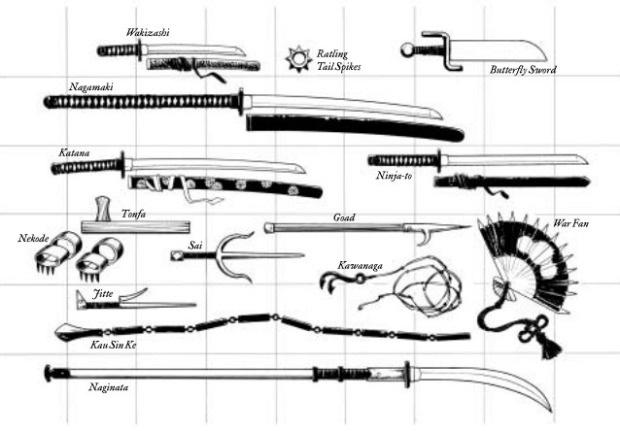
Oriental Adventures, D&D 3rd Edition (3.0)
Daisho Proficiency
The katana and the wakizashi are the only 3.5 weapons that explicitly used the stats of equivalents – bastard sword (which counts as martial or exotic depending on how you wield it) and short sword respectively. Except they’re always masterwork weapons. They were introduced in the DMG, and later tied to the Samurai base class in Complete Warrior.
Honourable Mention: Arms and Equipment Guide (3.0)
This book had the good sense to suggest using the stats of equivalent weapons instead of, well, exoticising them.
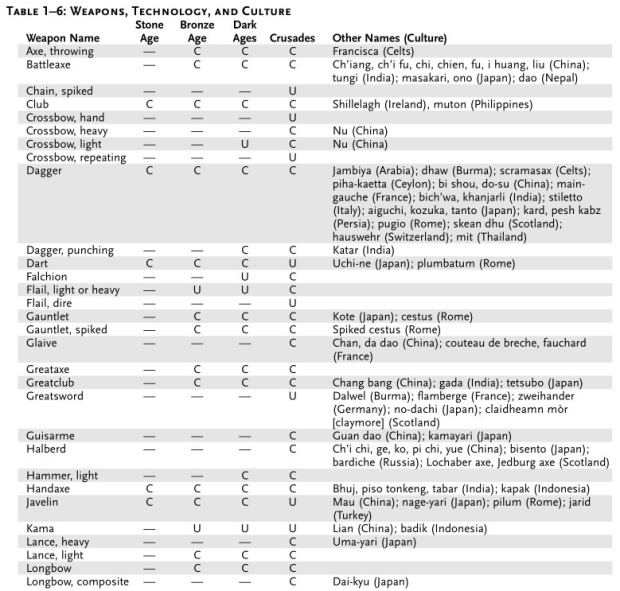
Oriental Adventures (3.0) approach for completeness
